-
Legacy Member

Ross Bayonet acquistion and question
Last edited by Rucker; 08-19-2016 at 03:35 PM.
-
-
08-19-2016 03:24 PM
# ADS
Friends and Sponsors

-
Legacy Member

I stand to be corrected on this but I think that you have a MK1 which is uncut. It is the MK2 which is cut at an angle at the end of the blade. I have recently acquired an example of each, one very similar to yours. Your example looks in marginally better condition then mine. I will post pictures in due course.
Looks like you have a MK2 scabbard which may have caused the confusion and I don't know how the scabbards differed.
I think that some were used as fighting knives in WW2 but I don't know the details.
---------- Post added 08-20-2016 at 12:04 AM ---------- Previous post was 08-19-2016 at 11:57 PM ----------
Does your scabbard have a metal/steel end which some may call a chape?
Last edited by Flying10uk; 08-19-2016 at 07:01 PM.
-
-
Advisory Panel


These rifles and bayonets saw limited service in WW2 but rest assured they saw service. Yes, the scabbard has the internal chape. Besides them all having it, this one can be seen in the first pic. 231 should be the unit mark and the scabbards saw hard use so there were replacements made for WW2.
-
-
Legacy Member

Here are pictures of my Ross bayonets a cut and uncut version. Both scabbards look the same but I can only make out a MK2 on one of the scabbards but would assume both of my scabbards are MK2 versions. I would think that there must be some slight design difference in the MK1 scabbard but unless some-one can produce a scabbard marked as such it is difficult to know what exactly. I don't think that the MK of the scabbard has anything to do with which MK of bayonet it contains?
More pictures to follow because I will have to reduce file size to get them to upload.
-
Thank You to Flying10uk For This Useful Post:
-
Legacy Member

Here are 3 more pictures.
-
-
Legacy Member

Obviously the cut version is the blade which is angled off at the end of the blade.
-
-
Legacy Member

Thanks for your replies and pics. I've been online researching the Ross bayonets pretty heavily since yesterday and I've found a lot of information...still with no definitive answer (to myself) on what distinguishes a MkI and MKII or other variations of the Ross bayos. Some state the MKI has the dimple at the pummel and the stepped ring which distinguish it from the MKII, where those characteristics were removed in the manufacturing process.
Fying10uk...If I follow that logic, you have an uncut MkI bayonet and a cut MkII bayonet...both sharp looking bayonets I should add.
I also read that the MKII is indicated next to the C^ with 11 (or should be Roman numerals II?). Contradicting that, I also read the characters beside the C^ indicate date of manufacture...in my case...11 being 1911. The four digit date below that...indicating date put into service...04/16...April 1916.
And lastly, Ross bayonets manufactured after 1910 are MKIIs?
After all said, I'm still not convinced I have a MKI or MKII? Obviously, I would like it to be an uncut MKII but, I'm not enthusiastic about stating such until I can have it proven to be so.
-
-
Why don't you go onto the bayonet.knives forum. Then Marysdad, Aragorn, Porterkids et al can look. They have yet to be proved wrong in my experience of this forum!
-
Thank You to Peter Laidler For This Useful Post:
-
Legacy Member

As far as I'm aware there are only uncut and cut Ross bayonets of which I have both types and are photographed in my posts. I'm not aware of a 3rd type of Ross bayonet but stand to be corrected. Looking at my 2 examples it's fairly obvious to see which is the cut example and which is the uncut example. As you only have a single Ross bayonet and by looking at my examples it should be easy to figure out that you have a uncut Ross bayonet. It's my understanding that the cut version is the MK2 but as I'm not an expert on Ross bayonets I stand to be corrected. I think that the digits next to the Canadian acceptance marking is a number 11 and this could refer to a regiment or unit. 4/16 could be the manufacture or perhaps even the issue date but I would go for manufacture.
acceptance marking is a number 11 and this could refer to a regiment or unit. 4/16 could be the manufacture or perhaps even the issue date but I would go for manufacture.
-
-
Advisory Panel


There are 1905 and 1910 bayonets, easy to tell by the muzzle ring size.
-
acceptance marks. The grip is marked 231.
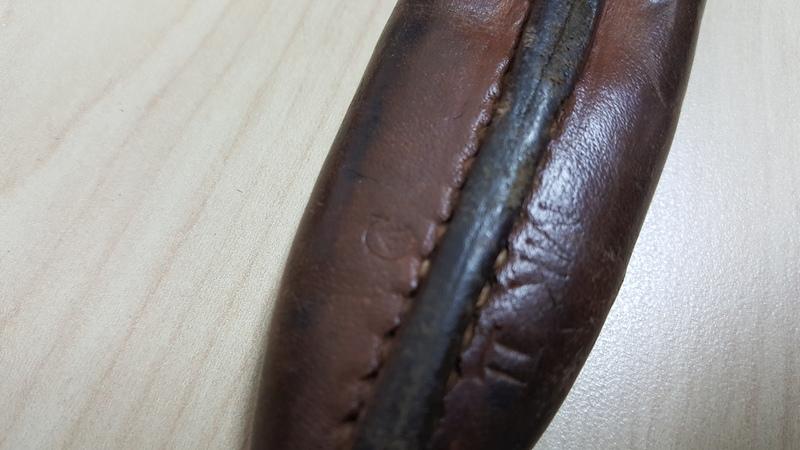 Information
Information














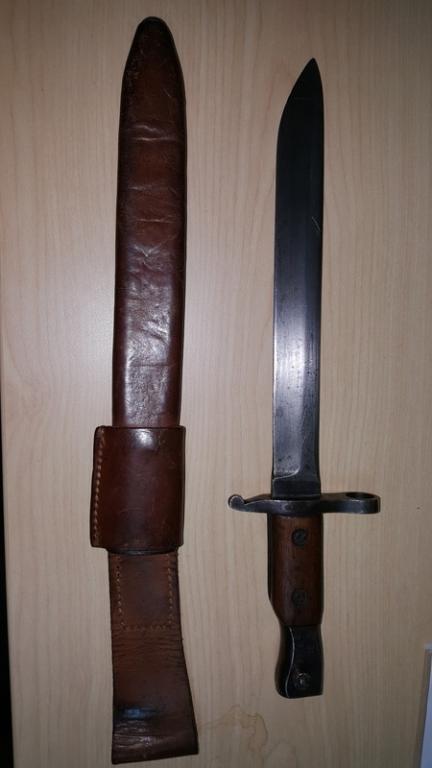
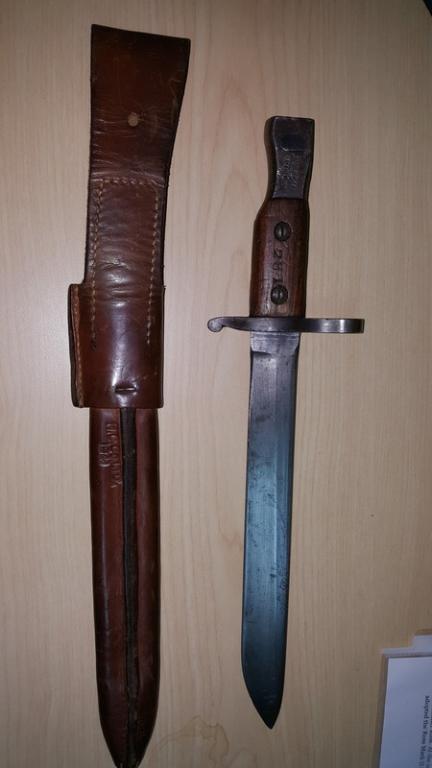
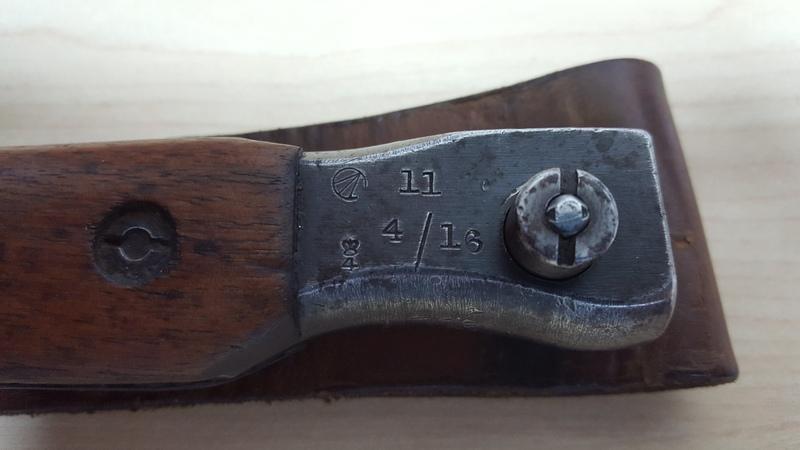
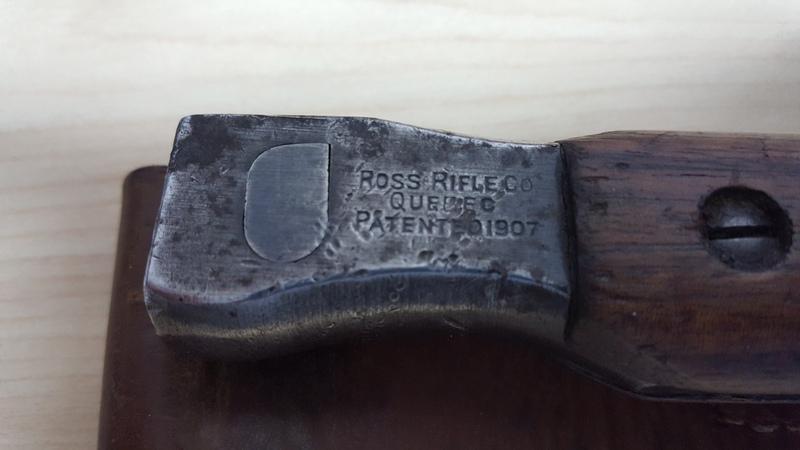
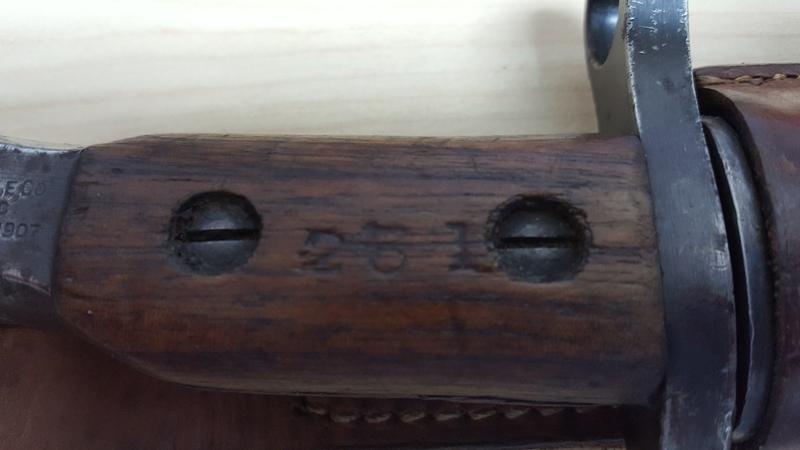
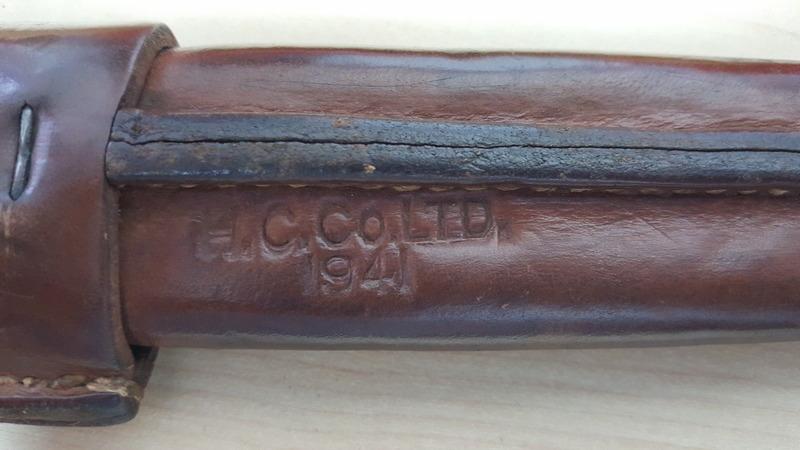
 PM
PM









